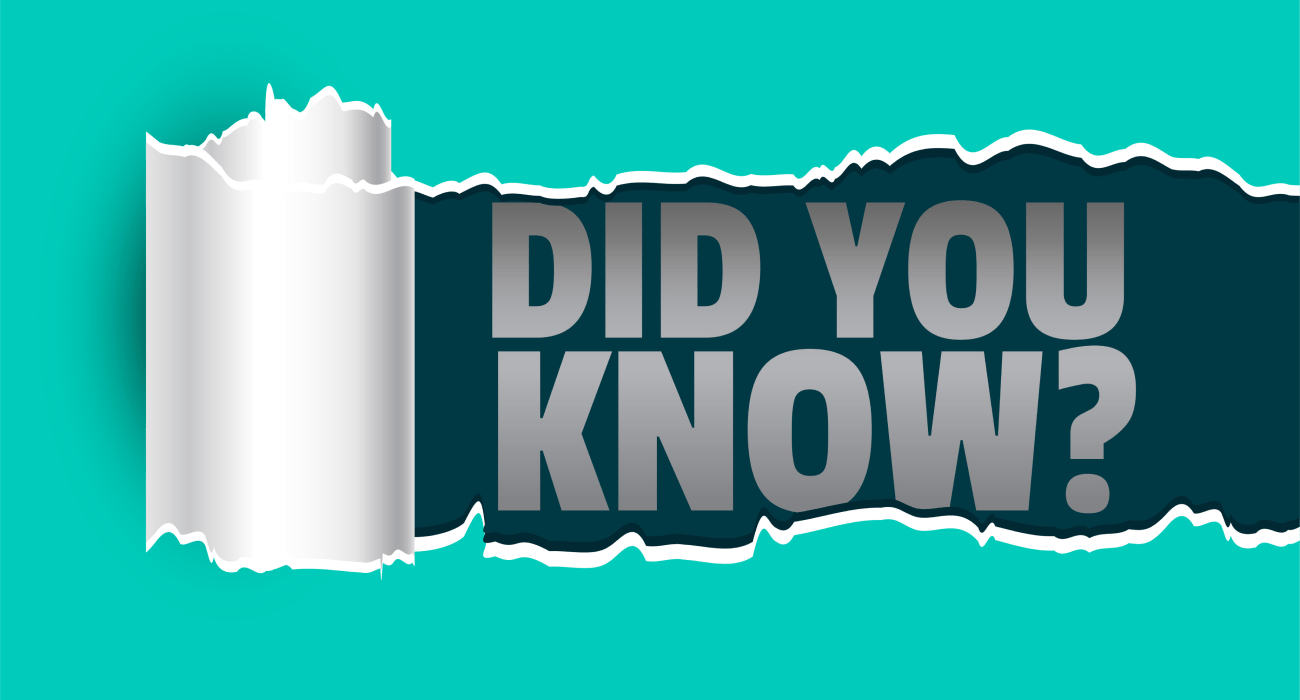You probably know about the history of the internet - bulletin board systems, the coffee pot webcam, and the first server.
But have you ever heard about Wi-Fi? What does Wi-Fi mean? How big is the internet, and where is the internet fastest? If you want to know the answer to these intriguing questions, read on!
The first website
Maybe you’ve heard about the first email sent, but what about the first website created? What kind of website was it, and is the site still running?
The first website to come into existence on the internet was the World Wide Web Project, whose aim was to provide newbie internet users with access to lots of information on how to get around.
The World Wide Web Project homepage offers you technical support, some history on the World Wide Web project, a bibliography of W3 paper documentation and some help getting you up and running on totally cutting-edge, modern browsers like NeXTStep, MidasWWW and Line Mode Browser.
You might expect the very first website to have gone under, like Bebo or MySpace has. But no! The World Wide Web Project is still online for you to see! As you might expect from one of the first-ever websites, the pages are sparse and bare-bones, with zero images, graphics, and colour.
But if you’re interested in reading November’s edition of the W3 news (from 1992) and getting a sense of what it was like to be one of the first people to surf the ‘net, go ahead and check it out!
Humans don’t use the internet that much
Most internet users access some of their pages using a search engine. If you don’t use Google, perhaps you’re a Bing aficionado, or maybe you’re more into DuckDuckGo or AskJeeves. But do you know how these sites work? Somehow, Google takes a copy of every webpage and knows when to show these to you.
This work is done by programs called crawlers or spiders. On behalf of Bing or Google, these programs explore the internet and come back with their results. It is this software - combined with bots and more egregious programs like malware - that make up the real power users of the internet. Even 24/7 online gamers can’t compare with this unparalleled constant activity!
There are 3.26 billion users
Yes, you might think the online world is an exclusive one. Computers and smartphones are expensive, with data coverage patchy and high-speed broadband still needing to be improved in many areas. And yet, according to most counts, nearly half the world’s population are reachable on the world wide web through one platform or another!
Of these 3.26 billion internet users, 1.7 live in Asia. This demographic is pretty much half of all users! These users get online at school, work, and, yes, also through their mobile phones - as some of the first adopters of 2G mobile data. Many parts of Asia have internet cafes where you can surf and game to your heart’s content.
However, in China, your internet access is very censored and guarded. People get around this with a VPN, but this is another added cost for accessing specific sites like Google or Facebook.
The Internet of Things is already here
You may not have heard of the Internet of Things - 87% of people in a recent study hadn’t - but the emerging technology is already here and is here to stay. Ever watched or read sci-fi warning you of the dangers of a connected house that turns against you or handheld devices that take over your mind? Okay, maybe these aren’t the best examples. However, these are basically what the Internet of Things means.
The Internet of Things refers to attaching an internet-enabled device that can sense or measure data to an otherwise “dumb” device. There will be smartwatches, smart speakers, robot vacuums and smart scales in the future.
There will also be intelligent fridges that can write and send shopping lists. We’ll also have smart garbage bins and curtains - Internet of Things devices will connect your life and simplify things.
The internet is 50 million horsepower
Broadband speeds are getting faster and faster, to the extent that some websites appear to load instantaneously! Even the most complex, beautiful, graphically rich video games can download and load within minutes. So how fast is the internet, anyway?
Well, with most internet pages' current quality, the internet needs 50 million horsepower to run. This is much faster than even the speediest supercar or hypercar, at generally just over 1000 horsepower.
What does this mean? In 2005, the brand-new broadband’s maximum speed was already an unparalleled 2 whole megabits!
However, nowadays, fibre optics have brought the top speed up to 100 megabytes per second - much, much faster. This has led to most websites having good-quality images and graphics that would otherwise take forever to load. That being said, people think internet speeds have reached their limits. Scientists believe that fibre optics cannot take any more data.
200 billion emails sent every day
You’d think social media would be the most popular option, but many emails are still sent daily. In fact, around 204 million emails get sent every single minute! However, 70% of these emails are unwanted spam emails. Imagine if your physical mail was the same! Much needs to be done to filter out these scam messages.
How did these junk emails come into being?
Well, it’s thought that the first spam email came from a computer salesman called Gary Thuerk. About 40 years ago, Gary wanted to spread the word about his new company’s new computer system. What better way to spread the word than by getting the message out onto nearby people’s computers?
With six hundred West Coast Arpanet (the precursor to proper internet) users’ email addresses publicly published, Gary decided to send out a “net mail message” to all of them rather than spending forever calling each individual or spending money on physical mail. “E-marketing” was the future, after all.
This innovation could pay off. The message? “We invite you to come to see the 2020 and hear about the ᴅᴇᴄSystem-20 family,’’ polite enough - but a wave of hostile replies and phone calls was the immediate result.
Nonetheless, Gary sold over twenty of these pricey, cutting-edge ᴅᴇᴄSystem-20 computers. Would they have sold so well otherwise? A Guinness World Record later, no one was seriously harmed.
The Internet of Things is older than you think
Yes, this subject of the future again. When you think of the Internet of Things, you might wonder what the first IoT device was. The smartwatch, maybe? Or perhaps a pager? No - it turns out the pioneering Internet of Things object is a machine that’s even older than either.
Back in 1974, the world’s first Automated Telling Machine was invented. By whom? John Shepherd-Barron, Do Duc Cuong, and Donald Wetzel all had brilliant ideas that made this simple out-of-hours cash withdrawal device work as best it could. With its 4-digit PINs and good security, plenty of people are still fans.
So, why is the ATM an IoT? Earlier, we mentioned how the Internet of Things is any device that can gather data and connect to the internet. ATMs have technically always done this, even back when they connected to Arpanet.
A third of the world has never used the internet
Though today’s internet is pretty much omnipresent to the extent that people require treatment for internet addiction, it’s true! Some people still have never had a cause to use the internet. In Britain, there are 9 million internet-free people, while
In fact, this number totals 37% of the world’s total population or almost 3 billion people. This figure has gone up substantially in recent years, what with the Covid-19 need for increased connectivity.
Even among these new internet users, hundreds of millions are still infrequent surfers or people who have now gone back offline. Many post-2020 users of the internet are still making do with a limited or slow connection, while others have gone full hog. In the first year of the pandemic alone, the global online population grew by 10%!
Of this 2.9 billion offline population, around 96% reside in developing countries. In the 46 least developed countries, accessing the internet is entirely unaffordable. Nearly three-quarters of people in this area have never gone online. That’s why the United Nations’ International Telecommunication Union (ITU) is committed to connecting the world.
The World Wide Web is not the internet
Many people called it the “World Wide Web” in the early days of the internet. Maybe this was a less intimidating name or a simple way to explain what the internet did. But did you know that the World Wide Web is a different concept from the internet? Yes, it turns out that the term “internet” actually specifically refers to a network of computers.
What is the World Wide Web, anyway? Well, it’s the bridge for sharing and accessing information. The World Wide Web is indeed a part of the internet. Still, the term specifically refers to the interconnected system of publicly available webpages you can access through the internet. The Web is a part of what happens on the internet, rather than the whole internet.
Confused? Try thinking of the World Wide Web as a vast address book containing all the internet pages. HTML links these pages.
Taiwan has the best internet - on Earth
If you’ve ever been to Japan or South Korea, you’ve probably been in awe of how fast the internet speeds are. Even the most complex page, like a Google Images search, loads immediately without waiting. But just how fast is this? Well, in the U.S., the typical bandwidth speed is around 8.4 Mbps. However, in South Korea and Japan, the average internet speed clocks in at an eyewatering 22 Mbps!
One provider, Google Fiber, aims to provide the fastest internet in the United States. Google Fiber offers average download speeds of 157.1 Mbps and an average advertised speed of up to 2000 Mbps.
That said, another part of Asia has managed to pip both Japan and South Korea to the post. In Taiwan, average download speeds of 135.88 Mbps have been reached! In fact, speeds of over 100 Mbps have been recorded in most parts of Asia.
Of course, the fastest possible internet would have to be located closest to the satellites that provide our internet - the International Space Station. After a recent connection upgrade, the ISS is now home to an unbelievable 600 megabit per second internet speed! Before, the typical speed was just 300 Mbps - still incredibly fast!
This increased speed allows for prompt message transmission between the ISS and earth, which is important. Effective communication is imperative for NASA, so good internet speeds will always be a priority at the ISS.
Conclusion
The internet. A fascinating phenomenon. We can’t live without it. Since its early days as an experiment funded by the military, the internet has never failed to connect us and bring us closer together - for both better and worse.
Humanity has always needed to connect, join together and share information, whether about important work and discoveries or just the latest cute cat video. We all do so much online, and it’s difficult to imagine how we would survive without the internet.
Just as predicted, many services have been either enhanced or entirely replaced by the internet. Greetings cards? Just send a message or email. Or, you could use an online service to send your cards more efficiently and cheaper, too. Shopping? Sure, frozen and chilled items can’t be sent by standard mail, but online shopping has opened up a world of choice to the average consumer.
And yet, even when you’ve been using the internet your whole life, there’s still so much more left to learn about it. In addition, the internet is constantly changing and mutating into new forms for you to explore. So, we hope you’ve enjoyed these facts about the fascinating, one-of-a-kind phenomenon that is the internet!















Leave a Reply